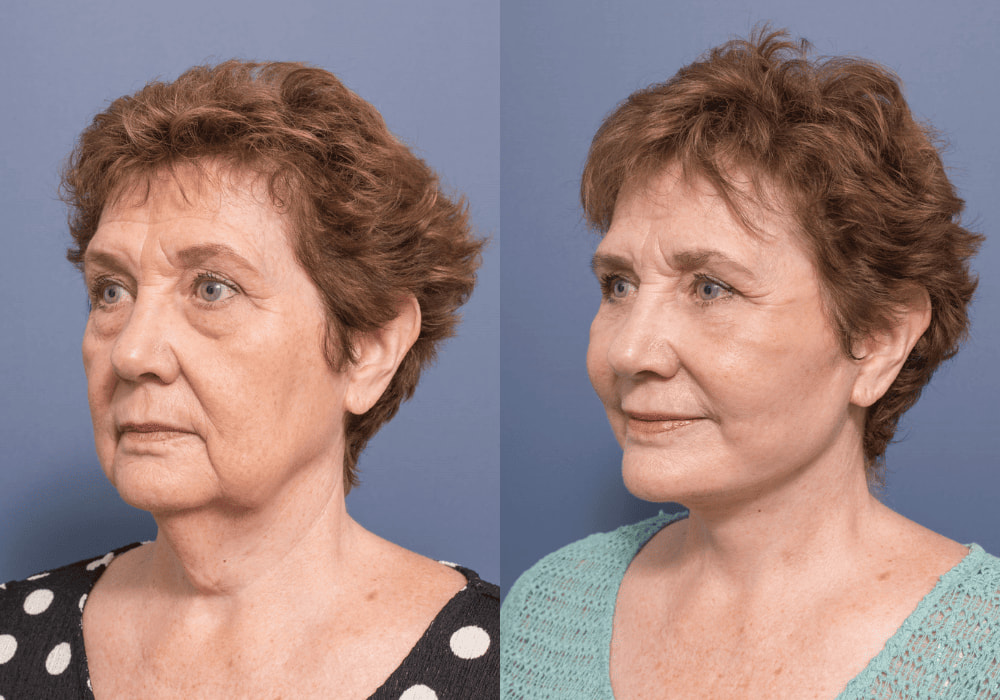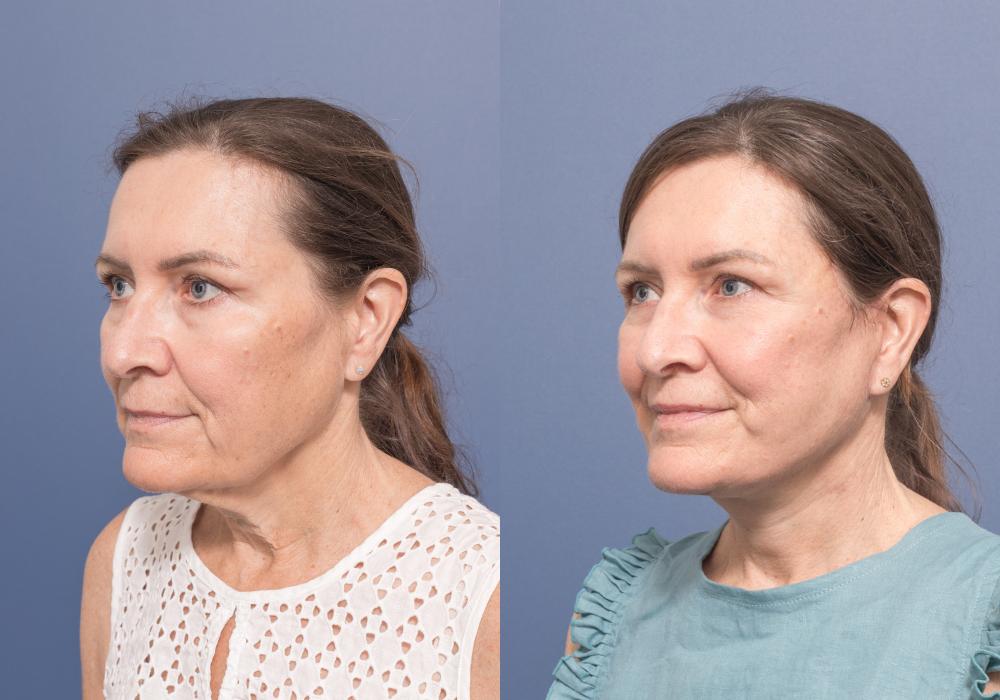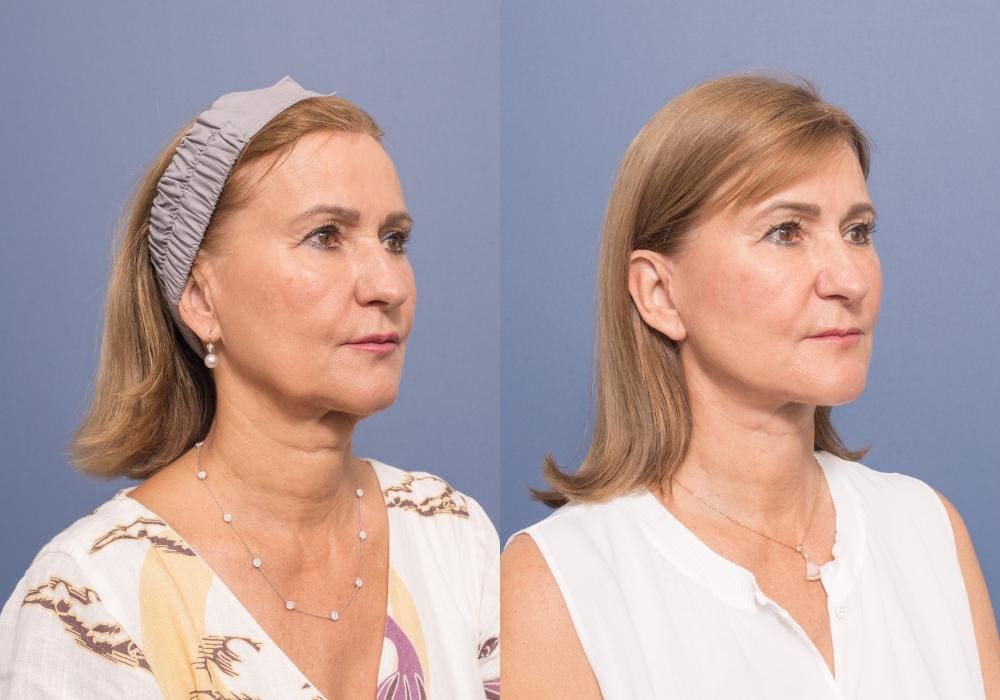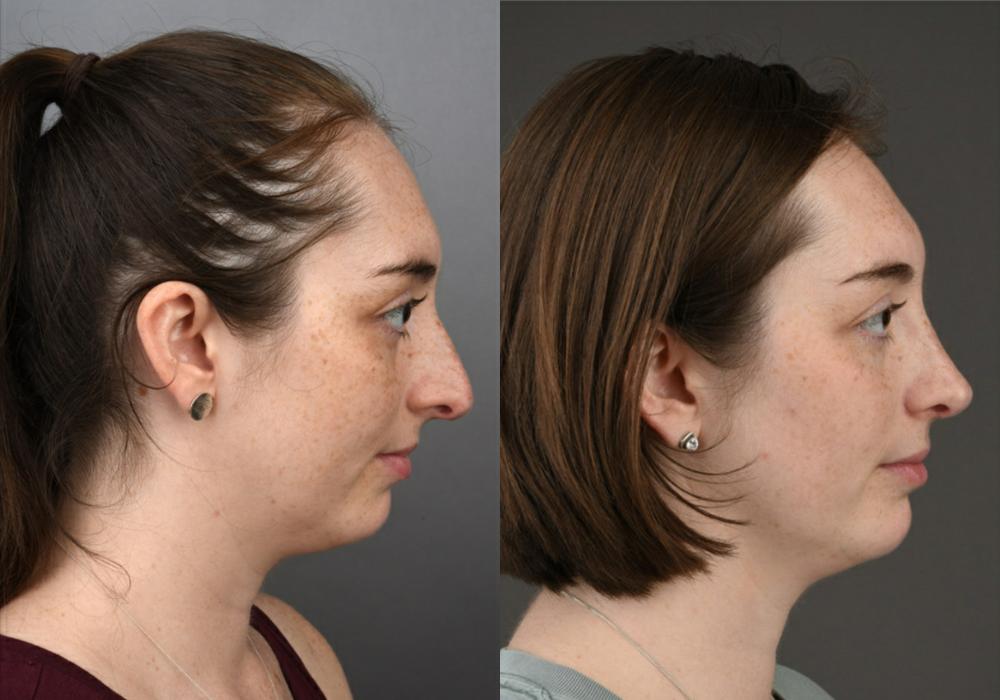
A deep neck lift is an excellent option for individuals who are experiencing looseness and fullness of the neck, but who have an otherwise well-defined cheek and jawline contour
Achieve a Tighter, More Contoured Looking Neck!
What is a Deep Neck Lift?
A deep neck lift is an excellent option for individuals who are experiencing looseness and fullness of the neck, but who have an otherwise well-defined cheek and jawline contour. Individuals with good skin elasticity tend to make better candidates than those with significant crepey or loose skin.
The main incisions typically made during a traditional neck lift, which are located in front of the ears and in front of the temporal hairline are often eliminated in this procedure.
There is one incision carefully concealed in the crease underneath the chin and depending on the degree of skin laxity, there may be a need for an incision behind the ears.

Through these incisions, Dr. Honeybrook is able to rework the deep muscle layers and fibrous tissue of the neck, effectively restoring the neckline contour. Additionally, Dr. Honeybrook may need to address the submandibular glands of the neck during the procedure.

The reshaping of the deep foundation of the neck is the hallmark of this procedure. However, it is important to note that because this procedure does not include the incisions around the ears that are performed during a facelift, it may not fully address sagging of the lower portion of the face, such as looseness in the jawline or howling.
Is a Deep Neck Lift the Right Procedure for Me?
Determining whether a deep neck lift is appropriate for an individual involves more than just considering their age. Age is not the sole factor that causes an undefined neckline. Individuals of any age may experience this issue. Furthermore, individuals in their 20s and 30s may show signs of neck aging earlier than others, even if their jawline contour is still well-defined.
The ideal candidates for this procedure are typically non-smokers, in good health, and have a BMI of 30 or lower, with minimal skin looseness or howling.
Dr. Honeybrook may suggest combining the deep neck lift with buccal fat pad reduction or a chin implant to provide a more comprehensive rejuvenation. Individuals with fuller or rounder faces, may benefit from the addition of these procedures to additionally improve the neck contour.
Am I a Good Candidate for a Deep Neck Lift?
During your consultation for a deep neck lift, Dr. Honeybrook will ask you to describe what bothers you about your neck, and may also ask you to talk about other related areas of your face, such as your skin tone, facial hollowing or cheek position.
Dr. Honeybrook will likely ask you to point out, very specifically, what you’d like to see changed. Identifying exactly what you would like to be addressed is the cornerstone of achieving your desired outcome.
Dr. Honeybrook will assess whether a deep neck lift is the right choice for you and determine the specific issues that need to be addressed to achieve optimal results. Individuals with extensive aging changes or skin wrinkling may benefit from a laser procedure to improve skin texture, while others may desire complementary procedures such as eyelid, brow, chin, or other enhancements to attain a harmonious overall appearance. Dr. Honeybrook will take the time to discuss these options with you, ensuring that they align with your aesthetic goals.
Deep Neck Lift Recovery and Results
After your deep neck lift procedure, bruising and swelling is expected, and you will have two drains placed on either side of your neck to minimise bruising.
In the following weeks and months, the incision lines will gradually become less noticeable. Initially, the incisions may appear pink and tender, but can be easily concealed with regular makeup. Within 3-4 months, the pink colour should subside, and the incision line will continue to fade over time.
The longevity of the results largely depends on various factors such as lifestyle choices, genetics, and consistent skincare practices with sun protection. Nevertheless, deep neck lifts are known for their durability.
While individuals may eventually require treatment in other facial areas such as the jowls, eyes, or cheeks, these concerns are best addressed through alternative procedures. On the other hand, it is unlikely that the area under the chin would necessitate deep reshaping again.
Note: Any surgical or invasive procedure carries risk. These risks will be discussed with you in detail during the consultation. For further information on risks please refer to the patient resources section of the website.





